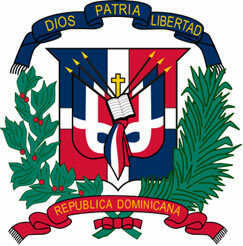A former Spanish colony, the Dominican Republic is an island nation in Central America, located on the island of Hispaniola (in the Caribbean Sea). The country's only land border is with Haiti to the west. National independence was conquered in February 1844, however, in 1861, Spain returned to exercise dominance in the country, which only obtained full autonomy in 1865.
Its political history is marked by dictatorships and US military interventions. Between 1930 and 1961, the Dominican Republic was ruled by dictator Rafael Leónidas Trujillo. This period was characterized by persecution of opponents, corruption and concentration of national wealth (it is estimated that the dictator owned 70% of arable land in the country and 90% of industries). The dictatorship only ended with the assassination of Trujillo, in May 1961. Some historians claim that the US Central Intelligence Agency (CIA) was responsible for this murder.
After this period, the country underwent a US military intervention until, in 1966, Joaquín Balaguer assumed the presidency.
This entire context of dictatorial policies and corruption contributed to the low standard of living of the inhabitants. Malnutrition affects 21% of the population; the illiteracy rate is 11% and the infant mortality rate is 28 deaths per thousand live births.
The Dominican Republic's main economic activity is tourism. With beautiful beaches, the country attracts thousands of visitors, especially from the United States, Canada and countries in Latin America. Another important source of funding is the export of sugarcane and ferronickel.
Despite the economy being developing, the unemployment rate remains high, a fact that triggers large migratory flows, especially to the United States.

Coat of Arms of the Dominican Republic
Dominican Republic data:
Territorial extension: 48,734 km².
Location: Central America.
Capital: Santo Domingo.
Tropical weather.
Government: Presidential Republic.
Administrative division: 31 provinces and 1 national district (São Domingo).
Language: Spanish (official).
Religions: Christianity 95% (Catholics 88.9%, Protestants 3.4%, others 2.7%), no religion and atheism 2.6%, others 2.4%.
Population: 10,090,151 inhabitants. (Men: 5,068,856; Women: 5,021,295).
Composition: 74% Eurafricans, 15% Europeans, 11% African Americans.
Demographic density: 207 inhabitants/km².
Average annual population growth rate: 1.4%.
Population residing in urban areas: 69.78%.
Population residing in rural areas: 30.22%.
Undernourished population: 21%.
Life expectancy at birth: 71.8 years.
Households with access to drinking water: 95%.
Households with access to the health network: 79%.
Human Development Index (HDI): 0.663 (average).
Currency: Dominican Peso.
Gross Domestic Product (GDP): 45.8 billion dollars.
GDP per capita: US$4,202.
External relations: World Bank, Rio Group, OAS, WTO, UN.
By Wagner de Cerqueira and Francisco
Graduated in Geography
Brazil School Team
countries - geography - Brazil School
Source: Brazil School - https://brasilescola.uol.com.br/geografia/republica-dominicana.htm

